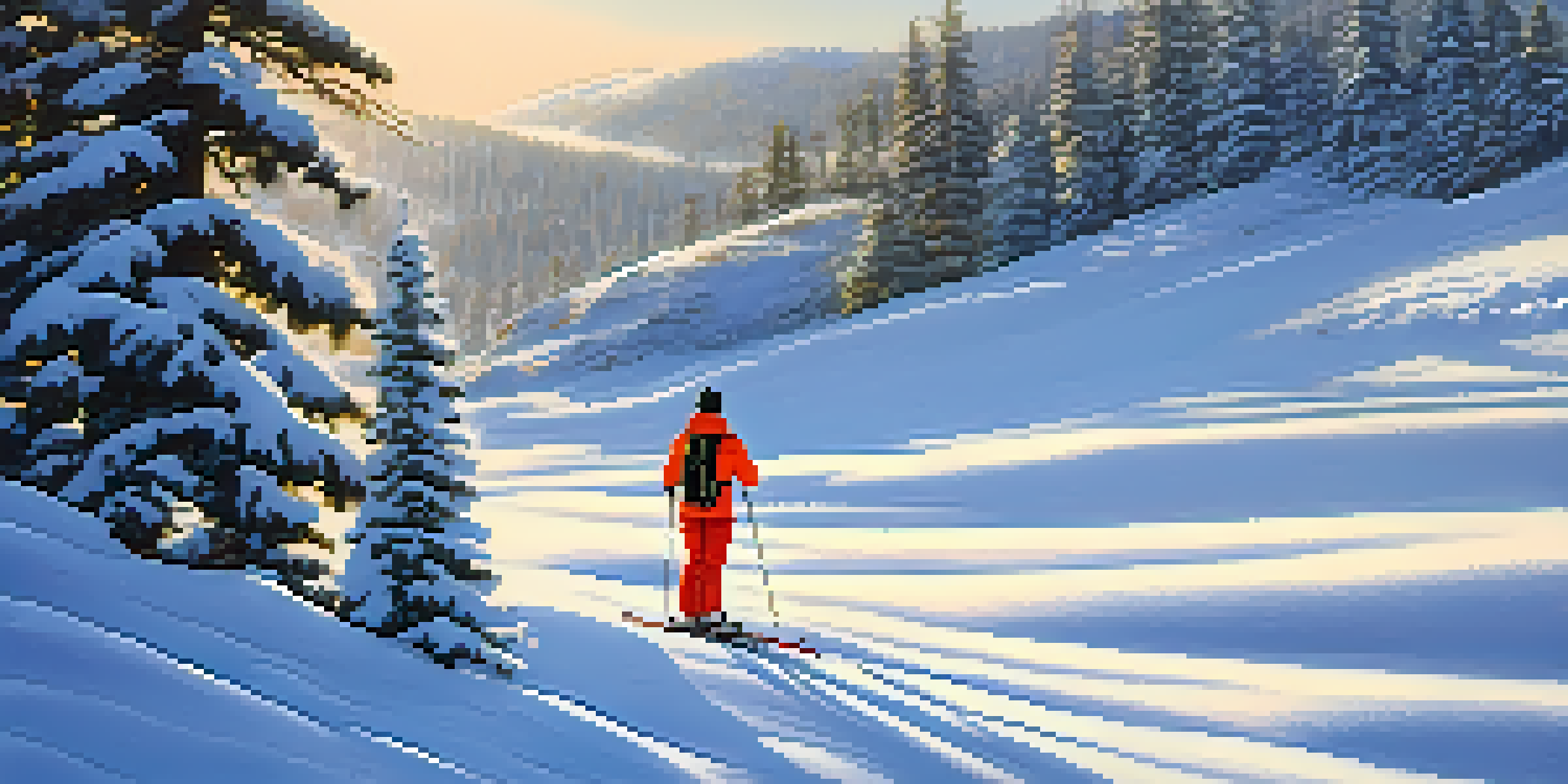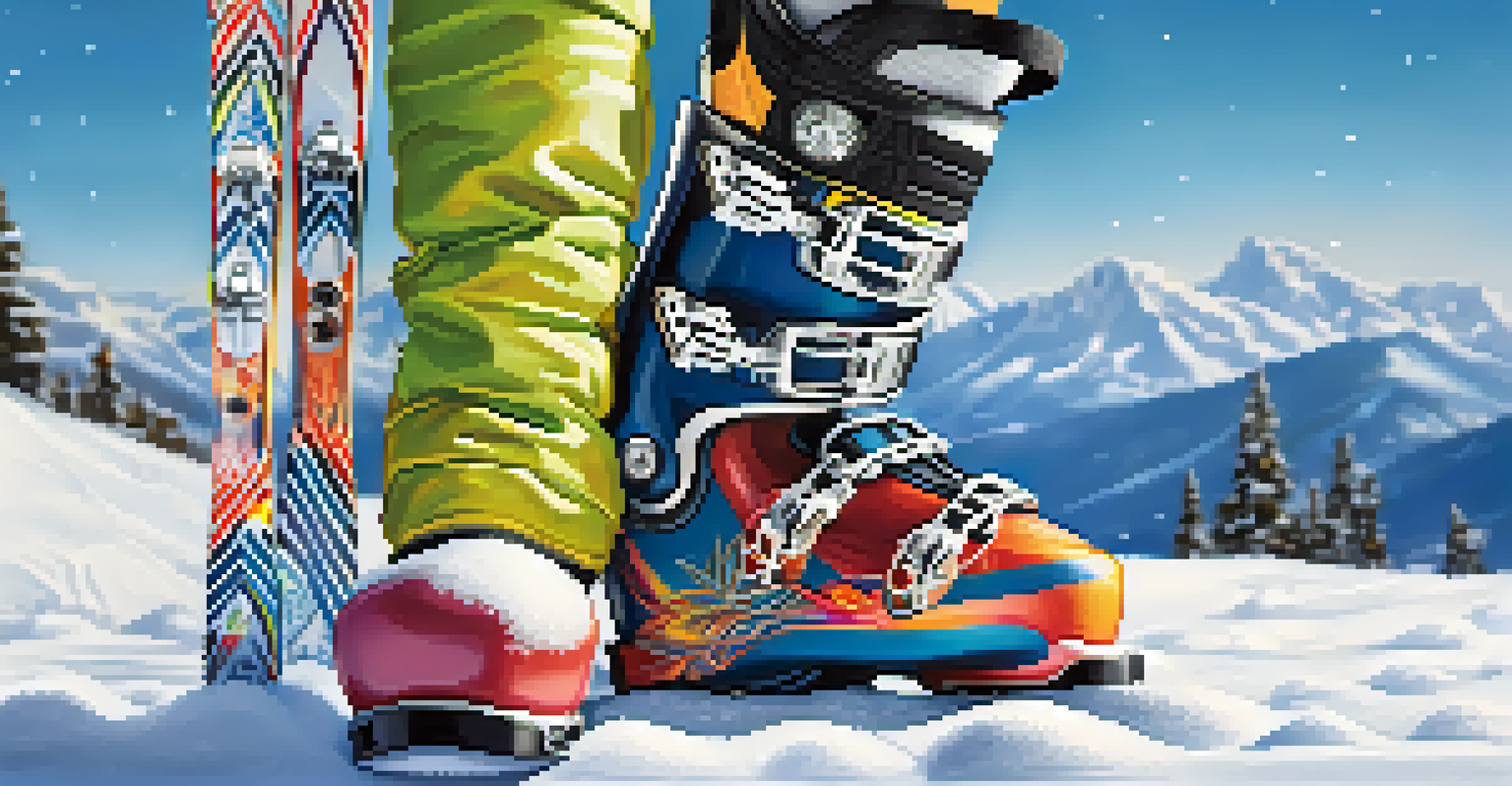Best Skiing Gear for Beginners: A Guide for Big Bear Visitors

Choosing the Right Skis for Your Skill Level
When you're just starting out on the slopes, selecting the right skis is crucial. Beginner skis are typically shorter and softer, which makes them easier to control and maneuver. They allow you to learn the basics without feeling overwhelmed.
Skiing is a dance, and the mountain always leads.
Look for skis marked as 'all-mountain' or 'beginner' in the rental shop. These skis will help you feel more confident as you practice turning and stopping. If you're unsure, don't hesitate to ask a knowledgeable staff member for guidance.
Remember, the right skis can make a significant difference in your experience. Picking the right size and type will not only improve your performance but also enhance your enjoyment of skiing at Big Bear.
Finding the Perfect Ski Boots for Comfort and Fit
Ski boots are just as important as skis, especially for beginners. A well-fitted boot will keep your feet warm and supported, which is essential for a pleasant day on the slopes. Ill-fitting boots can lead to discomfort and even injury.

When trying on boots, make sure they fit snugly but not painfully. You should be able to wiggle your toes slightly, but your heel should stay in place when you flex forward. Many rental shops offer a variety of sizes and styles, so take your time to find the right pair.
Choose Skis for Your Skill Level
Selecting the right skis is essential for beginners to enhance control and confidence on the slopes.
Investing in good-quality ski boots can enhance your skiing experience significantly. After all, comfort is key when you're learning the ropes at Big Bear.
Essential Ski Clothing for Beginners: Layering is Key
Dressing appropriately for skiing is vital, particularly for beginners who may be out on the slopes for hours. The best approach is to layer your clothing. Start with a moisture-wicking base layer, add an insulating layer, and finish with a waterproof outer layer.
The only way to enjoy skiing is to be comfortable and confident in your gear.
Avoid cotton as it retains moisture and can make you feel cold. Instead, opt for materials like wool or synthetic fabrics that provide warmth while allowing sweat to escape. Don't forget to wear ski socks designed specifically for the sport, as they offer extra cushioning and warmth.
By dressing in layers, you can adjust your clothing based on changing temperatures throughout the day. This way, you’ll stay comfortable and focused on improving your skills, rather than being distracted by the cold.
Choosing the Right Helmet for Safety and Comfort
Safety should always be a top priority when skiing, and wearing a helmet is a smart decision for beginners. A good helmet not only protects your head but also provides warmth. Many ski resorts, including those in Big Bear, require helmets for younger skiers.
When shopping for a helmet, look for one that fits snugly but comfortably. It should sit level on your head and not move around when you shake your head. Adjustable vents can also help you regulate temperature as you ski.
Invest in Proper Ski Boots
Well-fitted ski boots are crucial for comfort and support, significantly improving your skiing experience.
A quality helmet can make a world of difference in your skiing experience. With the right helmet, you can focus on mastering your skills while feeling secure and protected.
Goggles: Protecting Your Eyes from Sun and Snow
Ski goggles are an often overlooked piece of gear, yet they are essential for protecting your eyes from harmful UV rays and glare from the snow. A good pair of goggles will also help you see better in varying light conditions, which is crucial for beginners learning to navigate the slopes.
When choosing goggles, look for a pair that fits well with your helmet and offers anti-fog features. This is particularly important, as foggy goggles can hinder your visibility and make skiing feel more challenging.
Investing in a quality pair of goggles is a small price to pay for better visibility and eye protection. With the right gear, you'll be able to focus more on skiing and less on the elements around you.
Ski Poles: Finding the Right Size and Function
Ski poles may seem like a minor accessory, but they play an important role in maintaining balance and rhythm as you ski. For beginners, poles that are the right height can help with turns and stopping, making the learning process smoother.
To find the right size pole, flip it upside down and hold the grip; your elbow should be at a 90-degree angle. Most rental shops will have poles available in various sizes, so don’t hesitate to ask for help in finding the perfect fit.
Layer Clothing for Comfort
Dressing in layers helps regulate your body temperature, keeping you comfortable while learning to ski.
Having the right ski poles can boost your confidence on the slopes. They provide support and help you establish a good skiing posture, which is essential for beginners.
Accessories: Don’t Forget the Little Things
While the primary gear is essential, accessories can greatly enhance your skiing experience. Items like gloves, neck warmers, and beanies can keep you warm and comfortable while you learn. It's important to choose accessories that are designed for cold weather and snow.
Consider investing in waterproof gloves or mittens, as keeping your hands dry is crucial. Look for neck gaiters that can be pulled up over your face on particularly chilly days, and opt for a hat or beanie that fits well under your helmet.

By paying attention to these smaller details, you can ensure a more enjoyable and comfortable experience on the slopes. After all, the more comfortable you are, the more likely you are to enjoy your time skiing at Big Bear.